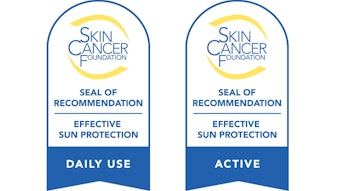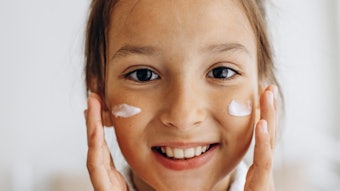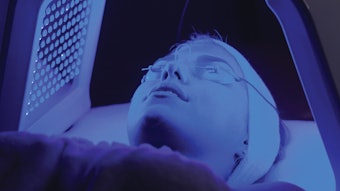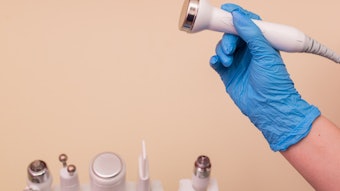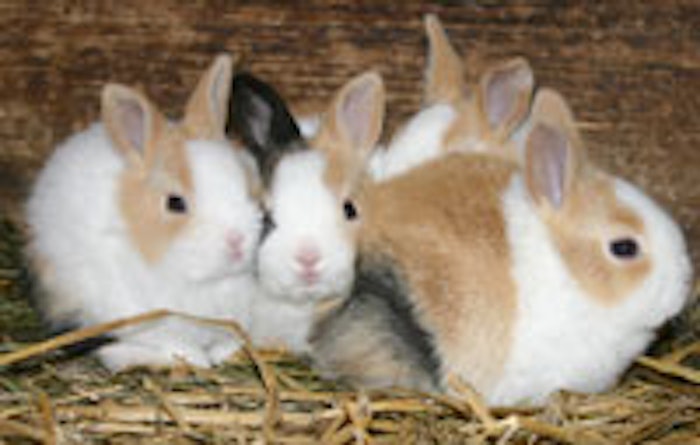
The full phase out of animal testing for cosmetic products in Europe is now in effect: cosmetics tested on animals, even for the most complex human health effects, can’t be marketed in the EU.
"Today's entry into force of the full marketing ban gives an important signal on the value that Europe attaches to animal welfare,” Tonio Borg, the European Commissioner in charge of health and consumer policy, said on Monday in an official statement. “The Commission is committed to continue supporting the development of alternative methods and to engage with third-world countries to follow our European approach. This is a great opportunity for Europe to set an example of responsible innovation in cosmetics without any compromise on consumer safety."
No animal testing for cosmetic purposes can be carried out in Europe, according to the European Commission’s regulations, and it's prohibited to market cosmetic products containing ingredients which have been tested on animals. However, the majority of ingredients used in cosmetics are ingredients that are also in used in many other consumer and industrial products such as in pharmaceuticals, detergents, food and paints. These, the Commission said, may be subject to animal testing requirements under these respective legal frameworks.
Cosmetics already in the marketplace, and for which their safety is already established and their historic animal data can continue to be relied on, aren't affected by the ban and can continue to be placed on the market.
In the EU, animal testing for finished cosmetic products has been banned since 2004 and animal testing for cosmetic ingredients has been banned since March 2009, also prohibiting the marketing of cosmetic products containing ingredients that have been tested on animals. But for the most complex tests the marketing ban the deadline was extended to March 11, 2013. This means that for these tests (repeated-dose toxicity, including skin sensitization and carcinogenicity, reproductive toxicity and toxicokinetics) companies could still carry out the tests outside the Union for cosmetic purposes and rely on the results for the safety assessment in the Union. This is not possible anymore as of March 11, 2013.
With the testing and marketing ban in force, the Commission said there can be no new animal testing for cosmetics purposes in the Union, either for cosmetics products and/or ingredients, and it is no longer possible to simply carry out testing for these purposes outside the Union and then use the data here to substantiate the safety of cosmetics. In a statement the Commission said, “consumers can therefore be sure that the cosmetic use of an ingredient in Europe cannot be the reason for any new animal testing.”
According to the Commission’s statistics, the European cosmetics and toiletries industry is worth more than €70 billion, representing almost half of the global market for cosmetics. An estimated 184,000 people are directly employed by the cosmetics industry in the Union. Although the Commission said “it is clear that there will be some impacts” on the cosmetics and cosmetics ingredient industry, it said the impacts, however, were "difficult to quantify."
“The Commission has thoroughly assessed the impacts of the marketing ban and considers that there are overriding reasons to implement it. This is in line with what many European citizens believe firmly that the development of cosmetics does not warrant animal testing,” Borg said.
Although it's not currently possible to fully replace animal testing by other methods (read more about this in (P&F's October 2012 issue), the Commission, as well as groups like the European Partnership for Alternative Approaches to Animal Testing, are examining alternative methods. Also, several alternative test methods have been validated by the European Union Reference Laboratory for Alternatives to Animal Testing (EURL ECVAM) and have subsequently been included in OECD Testing Guidelines and in the respective Union legal texts.
For example, reconstructed human skin models exist to test whether an ingredient can cause skin irritation. However, for the complex health effects that concern the whole human organism the situation is much more complicated. Still, the Commission has made about €238 million available between the years 2007 and 2011 for research into alternative methods to animal testing. It said the cosmetics industry has contributed as well, for example, by co-funding the Safety Evaluation Ultimately Replacing Animal Testing (SEURAT) research initiative with €25 million.
“The leading and global role of Europe in cosmetics requires reaching out to trading partners to explain and promote the European model and to work towards the international acceptance of alternative methods. The Commission will make this an integral part of the Union's trade agenda and international cooperation,” Borg said.

